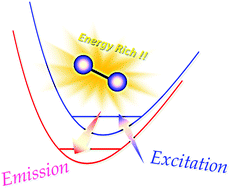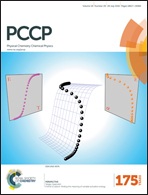Infrared amplified spontaneous emission from the 0 +g (3P0) and 0 +g (1D2) ion-pair states of molecular bromine
Abstract
We report the observation of amplified spontaneous emission for the first time from the 0+g (3P0) and 0+g (1D2) ion-pair states of Br2 by using an optical–optical double resonance technique through the B 3Π(0+u) valence state as the intermediate state. The strong infrared emission propagating along the incident laser radiation is assigned to the parallel ASE transitions from the 0+g ion-pair states down to the nearby 0+u ion-pair states. The subsequent UV fluorescence from the 0+u states to the high vibrational levels of the ground state is also observed. By the Franck–Condon simulation of the cascade UV fluorescence, we determine the vibrational distributions in the 0+u states populated by ASE, which are consistent with the intensity distribution in the dispersed infrared ASE spectrum. The lifetimes of the relevant ion-pair states are evaluated by analyzing the temporal profiles of the UV fluorescence.


 Please wait while we load your content...
Please wait while we load your content...